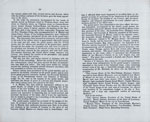Pierre Auguste Bourguignon Derbigny
1828-1829

|
Pierre Derbigny was born in Laon, France to a noble family. In the 1790's, Derbigny left France to escape the revolution and made his way to the Caribbean and then Pittsburg. He worked as an interpreter for Spanish authorities for several years before arriving in New Orleans near the turn of the century. Taking advantage of Derbigny's knowledge of languages, W.C.C. Claiborne appointed him Interpreter of Languages for the Territory after the Louisiana Purchase in 1803. Thereafter, he served in several public offices in the territory and state, including legislator, Secretary of State and Justice of the Supreme Court. Along with W.C.C. Claiborne, Edward Livingston, and Louis Moreau Lislet, who were all fellow masons, Derbigny advocated for the establishment of Louisiana as a civil law jurisdiction. Although not many records of his membership have been located, we do know that Derbigny served as an officer of the Charity Lodge No. 2 in New Orleans in 1820, and as an officer for the laying of the cornerstone at the New Orleans Mariners' Church in 1828. Derbigny was elected governor in 1828. Although he only served for 10 months, as governor he made provisions for the construction of levees and established regulations for levee inspection and maintenance, and strived to bring together opposing cultural groups within the state. Derbigny died less than a year after taking office near New Orleans in 1829, from injuries sustained when he was thrown from a carriage. |
| Click on thumbnails below to view a full-size image: | |
|---|---|

Cornerstone Laying Ceremony, Grand Lodge Past Proceedings, 1828 |

Excerpt from the Manuel Maconnique, Nouvelle-Orleans, 1828 |